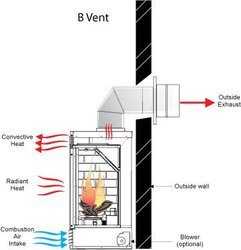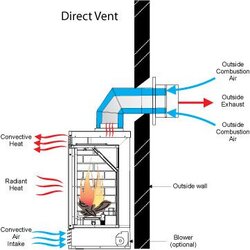I'm thoroughly confused about venting options for propane stoves. I understand direct vent, and I understand the concept behind B vent.
What I'm confused about, however, is whether B vent for gas/propane requires an exterior chimney that goes above the roof line. Most of the stuff I've seen on the internet is vague about this but seem to hint at it. Other sources - like the images below [from Regency's website] - indicate that the B vent would be a vertical run inside with horizontal vent to the outside.
What I'm confused about, however, is whether B vent for gas/propane requires an exterior chimney that goes above the roof line. Most of the stuff I've seen on the internet is vague about this but seem to hint at it. Other sources - like the images below [from Regency's website] - indicate that the B vent would be a vertical run inside with horizontal vent to the outside.




 So if I'm reading that right, it means that if you can get the B vent duct work up at least five feet from the stove, you can then go horizontal right out through the wall. Is that correct?
So if I'm reading that right, it means that if you can get the B vent duct work up at least five feet from the stove, you can then go horizontal right out through the wall. Is that correct?